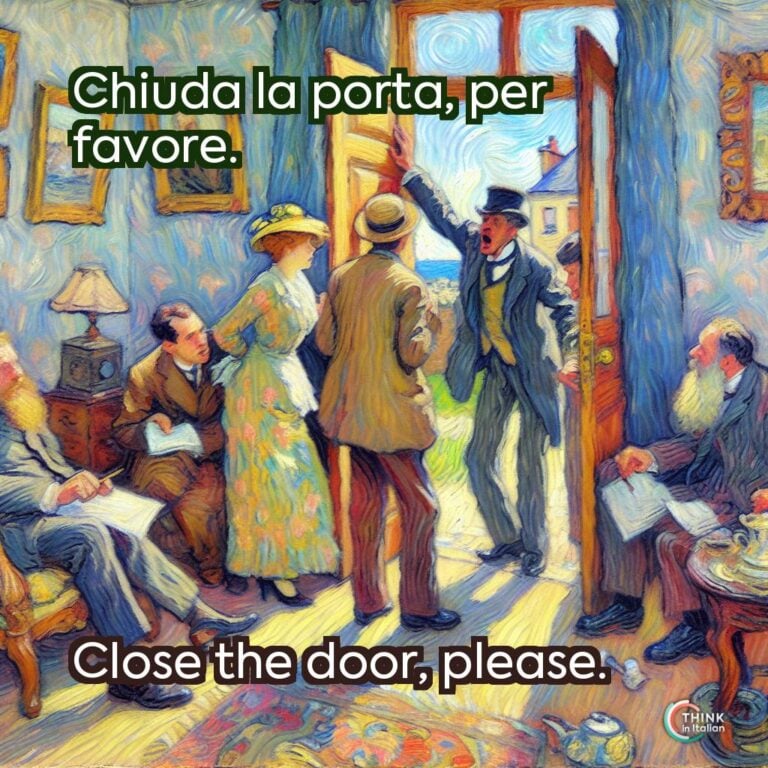The Imperative Mood in Italian
Different Types of Imperative
When I explain the imperative mood to my students, I like to provide them with an overview because I think it makes it easier to understand when it comes to conjugating the different forms.
As a matter of fact, the Italian imperative mood changes its conjugations depending on the form. Let me show you what I mean.
- Informal imperative: This is the imperative form addressed to the second person singular tu. The Italian informal imperative has two different conjugations, depending on whether the verb is affirmative or negative.
- Formal imperative: This is the imperative form addressed to the formal third person singular lei. The Italian formal imperative has one form only, for both affirmative and negative.
- Imperative with pronouns: Depending on the subject (tu vs lei) and whether it is affirmative or negative, pronouns can be displayed in four different ways. It sounds difficult, but it is very consistent throughout the conjugation.
Here are some examples, so you can see the differences.
Mangia la pasta!
Eat the pasta!
Non mangiare la pasta!
Do not eat the pasta!
Mangi la pasta, signora.
Eat the pasta, madam.
Non mangi la pasta, signora.
Do not eat pasta, madam.
Mangiala!
Eat it!
La mangi, signora!
Eat it, madam!
Non mangiarla! / Non la mangiare!
Do not eat it!
Non la mangi, signora.
Do not eat it, madam.
In this article, I will focus on the affirmative formal imperative in Italian.
When to Use the Affirmative Formal Imperative in Italian
We saw that, in general, the imperative mood is used to give commands, orders, or instructions, and it only exists in the present tense.
Specifically, the affirmative formal imperative in Italian is used to give positive commands, orders, and instructions to someone who is older than us, that we are not familiar with, and, in general, in formal contexts. It grammatically corresponds to the third person singular.
Signore, aspetti il suo turno!
Sir, wait your turn!
Apra la pagina e faccia l’iscrizione al sito.
Open the page and register on the website.
Formal Affirmative Imperative Mood: Conjugation
Regular Verbs
Regular verbs are quite consistent when conjugated in the formal affirmative form and share the same conjugation as the present subjunctive.
| Verb | Translation | Formal Imperative |
|---|---|---|
| Parlare | to speak | Lei parli |
| Finire | to finish | Lei finisca |
| Dormire | to sleep | Lei dorma |
Irregular verbs
Here I will show you irregular verbs, instead.
| Verb | Translation | Formal Imperative |
|---|---|---|
| Essere | to be | Lei sia |
| Avere | to have | Lei abbia |
| Sapere | to know | Lei sappia |
| Dare | to give | Lei dia |
| Fare | to do, to make | Lei faccia |
| Stare | to stay, to be | Lei stia |
| Andare | to go | Lei vada |
| Dire | to say, to tell | Lei dica |




